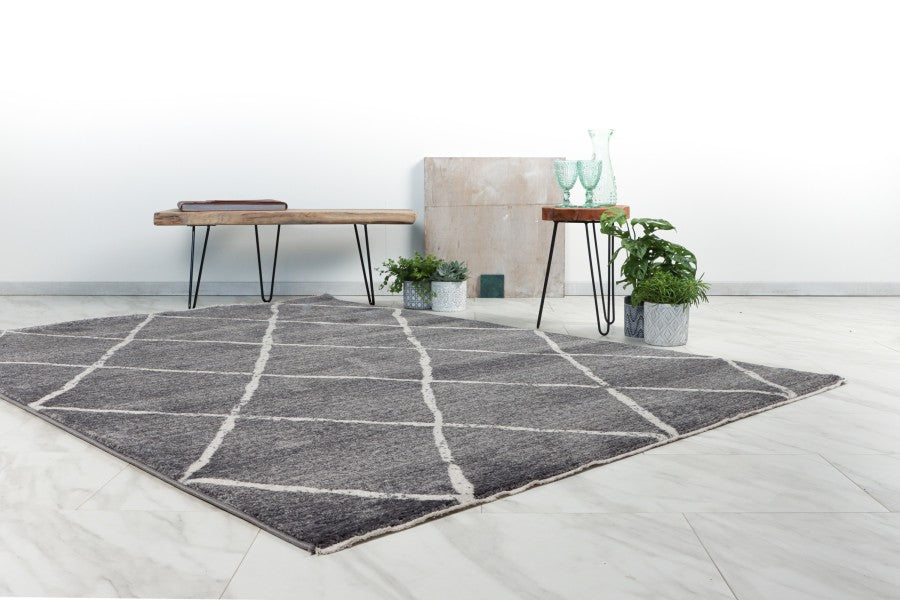How to Arrange Furniture on an Area Rug: Styling Tips for Every Room

While it is true that the perfect area rug can totally change a room, the method by which you arrange your furniture on that rug is just as important. A correctly placed rug will help tie your room together, accentuate your furniture, and add that cozy touch which really finishes your home. But just how do you go about arranging your furniture on an area rug for the best results? In this post, we have compiled some tested tips that could guide you in choosing the best layout for any room in your house.
If you are thinking of purchasing quality rugs, you can visit Adore Rugs, which has an awesome selection. You can choose from different styles, colors, and sizes for every space.
Living Room: Let the Rug Anchor Your Space
The living room is the heart of the home, so all about warmth and inviting. A perfectly picked-out area rug will totally change your living space, bringing into it warmth, texture, and style. When putting the furniture on an area rug, remember the rug should anchor the room to make everything cohesive and balanced. Whether you are targeting a modern, minimalist, or traditional living room style, your rug choice will play an indispensable role in tying the room together.
One of the most common mistakes many people make when selecting a rug for their living room is that they choose a rug that is too small to fit, which can be very disruptive to the flow. To avoid this, choose a rug that is large enough that all of your furniture sits on it completely or at least partially. In a living room, for instance, the front legs of your sofa and chairs need to be on the rug to make it one seated circle. This approach adds not just to the visual appeal but creates an impression of spaciousness. Following are two most common types of living room rug arrangements to perk up your home decor.
- All Furniture on the Rug: If you have a large space and a large rug, you can arrange all of your seating on the rug. This gives you a cohesive look, where the rug becomes the tie that helps to hold all of the furniture together. Make certain there is about 8-12 inches of floor showing between the rug and wall to keep the room feeling open.
- Front legs on the rug: this is often a lot more flexible, particularly for smaller living rooms. You are simply placing the front legs of your sofa and chairs onto the rug. This would still keep the furniture tied together but can use a slightly smaller rug without sacrificing style or comfort.

Bedroom: Keep it Cozy Underfoot
The bedroom is your haven; it's where comfort and relaxation sit, and there's nothing quite as divine as getting out of bed onto a soft, plush area rug. The right rug immediately raises the coziness and aesthetic of the room, putting a layer of warmth and luxuriousness underfoot. When placing furniture on a bedroom rug, the aim is always to achieve that perfect balance in the layout-a setting where comfort is accentuated without necessarily crowding up space. Be it a modern or classic-styled bedroom, a well-set rug can change over your room into your retreat.
Ideally, the rug should extend far enough under the bed so that there's plenty of rug visible when you step out. You would want at least two feet of rug on either side of the bed for a balanced look. This way, the rug frames your sleeping area quite nicely. It is also going to give a sense of symmetry and will work with and put the other pieces together in your room, such as nightstands and benches, to create a harmonious room altogether.
Here's a rough outline of some layout options you may consider for bedrooms:
- Full Coverage: Place a large rug in such a way that it covers the entire area under the bed. Let the rug extend at least two to three feet on either side. This will work great if you use king- or queen-sized beds.
- Partial Coverage: In this layout, the rug is placed under the bottom two-thirds of the bed so that the top of the bed and the nightstands show the floor. This is a less expensive option that is best suited to smaller rooms.

Dining Room: Rug Size Matters
When trying to decide how to place your furniture on an area rug in the dining room, the secret is all about getting the size right. It should be big enough to hold your dining table and all the chairs on it. In case any chair is pulled outside, it should be still catching on the rug without tipping from its edges. This provides a smooth flow and avoids accidents that might result from tripping on it. A too-small rug will make the room feel constrained and awkward, with an unbalanced view.
Here are some key tips to remember when it comes to a rug in a dining room:
- All Chairs on the Rug: It is big enough that, when you pull out the chairs, they remain on the rug. A good rule of thumb to determine your ideal rug size is to add at least 24–30 inches to each side of your dining table's dimensions.
- Shape Matters: If you have a rectangular dining table, then you need to choose a rectangular rug. For round tables, usually, the round rugs look better. Because the shape of the rug should resemble the shape of your table for a harmonious design.

Home Office: Define Your Workspace
In the age of remote work, having a comfortable and functional home office is even more crucial than ever. A well-chosen rug can help define your workspace, especially if your home office is part of a larger room or an open-concept area. The rug should be large enough to accommodate your desk and chair but not so large that it becomes overwhelming in the room and makes functionality of other furniture difficult. A perfectly sized rug adds order and structure to the room, giving it much more purpose and putting it all together.
One question many people have is whether a rug is needed under the desk in a home office. While not necessary, per se, a rug has the power to add warmth, even reduce echo or noise in the space, and can create an atmosphere that is much more inviting and comfortable. Additionally, a rug can help protect your floors from the wear and tear of an office chair. If you use a rolling office chair, get a low-pile rug that will be out of the way but still adds comfort and style to your workspace. In a home office environment, a particularly low-maintenance choice-like a flat-weave or easy-to-clean rug-is best.

SHARE:



